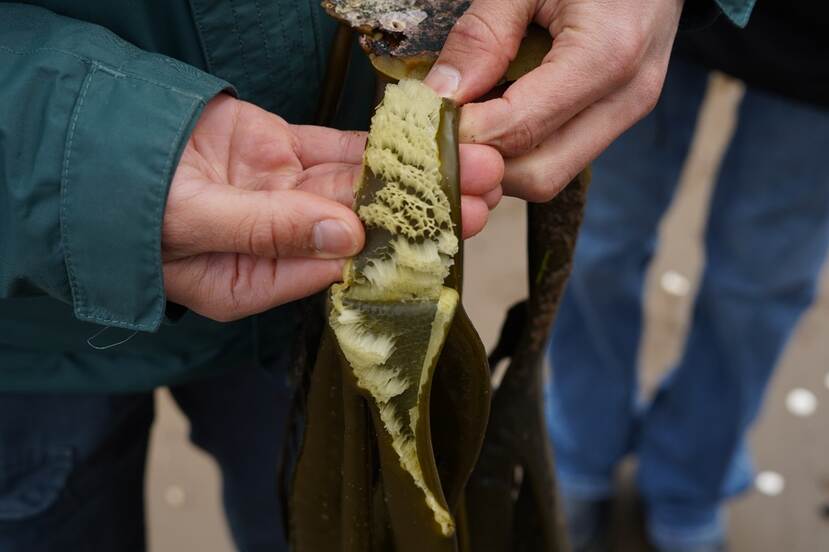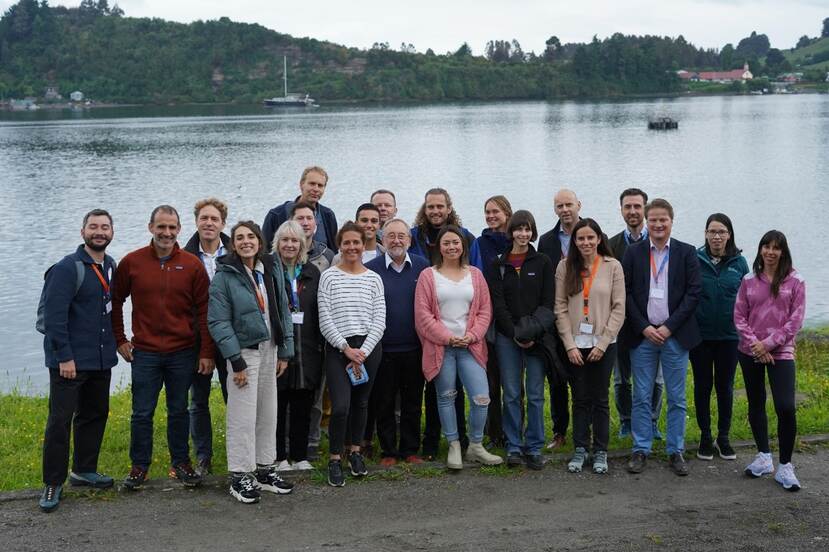Stimulating sustainable seaweed cultivation in Chile through innovation
The seaweed industry is rapidly growing, with its production having more than doubled over the past decade. Seaweeds are being used for agricultural purposes, as food and feed, and have become an increasingly valuable ingredient in both the pharma- and cosmetic industry. The question is whether the production of seaweed can keep up with its rising interest, and more importantly, if this can be done in a sustainable way.

Seaweed innovation mission
In November 2023, the first seaweed innovation mission in Chile took place, in which Dutch and Chilean organizations were brought together to exchange knowledge, share innovative ideas and to explore opportunities for partnerships. The high attendance of its kick-off – a seminar with a show up rate of 98% of all invitees - reflected the serious interest to collaborate in this industry.
Chile: a key strategic partner
The Netherlands is actively pursuing a transition towards climate-proof food and feed production, and is looking for international partnerships to accelerate this (protein) transition. Seaweeds can, amongst others, be used as an alternative to animal-based protein. It is highly nutritious, containing minerals, vitamins and proteins, with some species even carrying all the essential amino acids. The Westerdijk Fungal Biodiversity Institute, who joined this mission to expand their network in seaweed valorization, is currently researching how to extract proteins from seaweed using fungal enzymes. Besides being a suitable protein source for human consumption, it can also be beneficial in animal feed, being for example able to strongly reduce methane emissions in cows. With its rich coastline and innovative eco-system, Chile could prove a key strategic partner for the Netherlands in realizing the transition.
Cultivation remains a challenge
Although seaweed and microalgae are abundant in the South of Chile, cultivation is rare. To this day, 96% of the seaweed is harvested from the wild, only a mere 4% comes from cultivation. According to the Chilean producers of seaweed, its cultivation is yet to be profitable. One of the main problems is labor. A diver costs over 250 US dollars per day, and they are hard to find. This makes it difficult to compete with a low-income countries like Indonesia, which is currently dominating the worldwide market supply. There is a need for automatization of farming practices and different harvesting techniques. Additionally, scaling up will also be necessary in order to reduce costs and to set up profitable value chains. This was the conclusion of INIA, the governmental agricultural research center in Chile, to which the Dutch delegation paid a visit during the mission. This proved a great opportunity for one of the participating companies, Hortimare. This supplier of high quality seaweed starting material advises and supports seaweed farmers in order for them to scale up, making seaweed a competitive alternative for land-based products.
People, Planet, Profit
On a smaller scale, there is no harm in wild harvesting. However, on a large scale, it can have a serious negative effect on the environment. When demands are high, which is now the case in Chile, overharvesting becomes an issue. Seaweeds are a habitat for all sorts of marine wildlife and provide several ecosystem services. Wageningen Marine Research (WMR) is currently focusing part of its research on the environmental impact of seaweed cultivation. In addition, the Netherlands Institute for Sea Research (NIOZ) is addressing the sustainable development of the seaweed industry. The hazards of large-scale, monoculture cultivation - and thereby making the same mistakes as previously made in farming - should be avoided. It is important that business cases for seaweed cultivation will be developed around the three P's of sustainability: People, Planet and Profit. Convincing parties of the importance of these principals and the benefits of a diverse and sustainable production system is key. On the Chilean side, Centro i-mar, a research institute belonging to the University of Los Lagos, is addressing this as well through their research
Complementary knowledge gaps
To this day, the Chilean seaweed market is mainly aimed at low value products, giving room for innovation. High value (bio-refined) products are needed to start a market pull and to create market value. The Netherlands Organization for Applied Scientific Research (TNO) is currently combining experimental seaweed research with process development, participating in projects on commercially viable processes for the conversion of seaweed into biofuels, biochemicals and biobased materials. Interestingly in Chile, there is a lack of knowledge on seaweed cultivation and application, whilst there is already a market. The Netherlands on the other hand, has been expanding its knowledge on seaweed cultivation technologies, whilst a market is still missing. Partnerships between Chile and the Netherlands could fill these complementary knowledge gaps.
Maripark
Furthermore, there was much interest from the Chilean side in the plans of the Dutch Ministry of Agriculture, Nature and Food Quality (LNV) to create the first ever ‘Maripark’. In this nature-inclusive maritime business park, offshore wind farms are being combined with other functions, such as aquaculture and nature protection. The Chilean government is keen to follow it’s developments and to potentially explore the possibility of a similar system in Chile. Innovative solutions are needed to be able to sustainably produce seaweed within these Mariparks. Both EY and the Netherlands Enterprise Agency (RVO) were present to share their ambitions for the Maripark.
The first R&D facility in Latin America
Multinational Nestle also sees opportunities in (Chilean grown) seaweed. Last year they opened an R&D facility in Santiago, the first in Latin America. They signed an agreement with the Catholic University of Chile (UC Chile) to explore the potential of marine plants and other alternative vegetable protein sources in Latin America. The research agreement focuses on supply chains, nutritional profiles and possible product applications. The delegation had the opportunity to visit their facility, accompanied by researchers from UC Chile, presenting their latest knowledge on seaweed production and application.
Conclusions and next steps
Through this mission, the participants could gain a concise overview of the developments happening in the seaweed aquaculture sector in Chile, getting a broader perspective on seaweed aquaculture production methods and seeing the disconnection in the infrastructure between farmers, sales and governmental organizations. In addition, the hurdles that hold back the industry became much clearer, many of which appeared similar as in the Netherlands. We hope this Mission will lead to innovative solutions, enhanced relationships between stakeholders and long term partnerships. We need to tackle these challenges together in order to keep up with the growing demand for seaweeds whilst limiting the negative effect on the environment.
About the mission
The seaweed innovation mission took place from the 27th of November until the 1st of December. The Dutch delegation consisted of research institutes (NIOZ, TNO, WMR, The Westerdijk Fungal Biodiversity Institute), companies (Hortimare, Nestle, EY) and the government (RVO and the Ministry of LNV). The mission kicked-off with a seminar in Santiago, followed by visits and meetings in the region of Los Lagos in the South of Chile. The participants are currently planning next steps and exploring possibilities for partnerships.
If you are interested in this Mission and its follow up, feel free to contact the team LAN Cono Sur at STG-LNV@minbuza.nl
